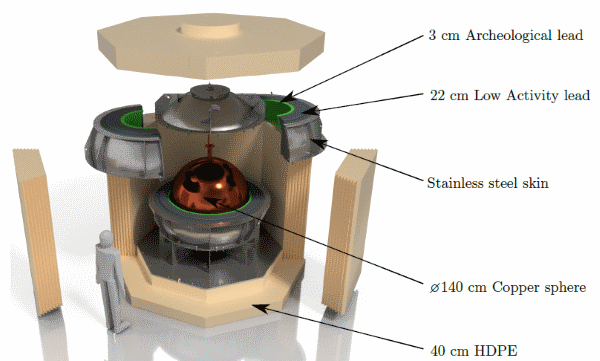
Our expanded collaboration is now building a 1.4 m diameter detector with improved shielding, lower backgrounds, and a lower predicted energy threshold. This will allow us to greatly improve our sensitivity in the GeV and sub-GeV dark matter mass ranges, in particular through the use of very light nuclei targets like helium and hydrogen from CH4 or other H-rich gases. This new experiment will be located at SNOLAB, the second deepest and the cleanest underground laboratory in the world.
The forthcoming next phase of the NEWS-G experiment will be installed in SNOLAB, Sudbury, Canada, the second deepest underground laboratory in the world. SNOLAB operates out of the active Vale Creighton Mine, and is home to many other dark matter and neutrino experiments. The 2000 m thick rock coverage above the experiment will shield the detector from cosmic rays and their secondary particles, while the low cross section particles we are looking for like neutrinos or dark matter particles will pass through the rock to reach the experiment.
Click on an image to view the gallery.




The detector will consist of a 140 cm diameter Spherical Proportional Counter (SPC) made of ultra-pure copper and surrounded by two shields. The inner part of the compact lead shield is cast from archeological lead, and the outer part is made from low activity lead. Each piece of the lead shield has a stainless steel skin used as a support. The whole system is sitting in a high-density polyethylene (HDPE) shield to thermalize and capture the neutrons. One section of the HPDE wall and the support structure has been removed from the Figure below for clarity. A glove box will sit on top of the whole structure to allow for changing the rod and the sensor without introducing radon.

The figure to the left shows the expected sensitivity of the NEWS-G experiment at SNOLAB in dashed black line. These projections account for the anticipated background from materials, assume a detector threshold of 1 electron (i.e. 20 to 40 eVee), and quenching factors extrapolated down to 100-200 eVNR.
 Queen's Physics Department
Queen's Physics Department

